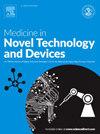骨支架变形过程中质量输运和流体流动诱导的壁剪应力的数值研究
Q3 Medicine
引用次数: 0
摘要
在拉伸或压缩过程中,通过在横向方向上扩张或收缩,Auxetic结构对机械力表现出非凡的响应,使其非常适合用于多孔生物医学植入物。然而,它们的生物学功能,包括营养转运、代谢废物清除和细胞增殖和分化,仍未被探索。本研究采用计算流体力学(CFD)分析了支架的形变对其生物性能的影响。我们设计了一种辅助支架(a -scaffold)和一种非辅助支架(N-scaffold),它们具有相同的孔隙率(80%)进行比较。分析了0%、5%和10%压缩应变下的变形,并利用CFD模拟来评估支架内部的流体动力学。模拟了水流与支架的相互作用,从而预测了质量传递和流体流动引起的壁面剪切应力(WSS)。结果表明,流体流动方向和支架结构对质量输运特性有显著影响。变形响应对支架生物性能也有影响;具体来说,a -支架的凹支阻碍了流体在X方向的流动,降低了渗透率,但可能促进了内部流体的均匀分布。虽然a -支架的形变降低了其渗透性,但导致WSS分布更加不规则,表明机械载荷作用下细胞动态刺激增强。a -支架的WSSAVG及其在变形过程中的变化在X方向上大于Z方向。因此,a -支架在X方向上表现出更好的传递机械刺激的能力。这些初步研究首次在数值上表征了支架在缺氧变形下的质量输运特性,为缺氧支架的设计和应用提供了指导。本文章由计算机程序翻译,如有差异,请以英文原文为准。
Mass transport and fluid flow-induced wall shear stress in auxetic bone scaffolds during deformation process: a numerical study
Auxetic structures exhibit an extraordinary response to mechanical forces by expanding or contracting in the transverse direction during stretching or compression, making them highly suitable for porous biomedical implants. However, their biological functions, including nutrient transport, metabolic waste removal, and cell proliferation and differentiation, remain unexplored. This study employs computational fluid dynamics (CFD) to analyze how the auxetic deformation of a scaffold influences its biological performance. An auxetic scaffold (A-scaffold) was designed alongside a non-auxetic scaffold (N-scaffold) with identical porosity (80 %) for comparison. Deformations at compressive strains of 0 %, 5 %, and 10 % were analyzed and utilized in CFD simulations to evaluate the fluid dynamics within the scaffolds. The interaction of water flow with the scaffolds was simulated, leading to predictions of mass transport and fluid flow-induced wall shear stress (WSS). Results indicated that both the fluid flow direction and scaffold architecture significantly influenced mass transport characteristics. The deformation response also impacted scaffold biological performance; specifically, the A-scaffold's concave struts hindered fluid flow in the X direction, reducing permeability but potentially promoting uniform internal fluid distribution. Although the auxetic deformation of the A-scaffold decreased its permeability, it resulted in a more irregular WSS distribution, suggesting enhanced dynamic cellular stimulation under mechanical loading. The WSSAVG of the A-scaffold and its variation during deformation were larger in the X direction than that of the Z direction. As a result, the A-scaffold exhibited better ability to transmit mechanical stimulation in the X direction. These preliminary studies numerically characterized the mass transport properties of scaffolds under auxetic deformation for the first time, provided guidance for the design and application of an auxetic scaffold.
求助全文
通过发布文献求助,成功后即可免费获取论文全文。
去求助
来源期刊

Medicine in Novel Technology and Devices
Medicine-Medicine (miscellaneous)
CiteScore
3.00
自引率
0.00%
发文量
74
审稿时长
64 days
 求助内容:
求助内容: 应助结果提醒方式:
应助结果提醒方式:


